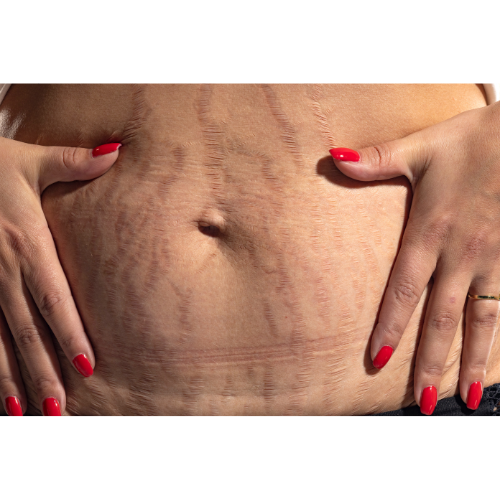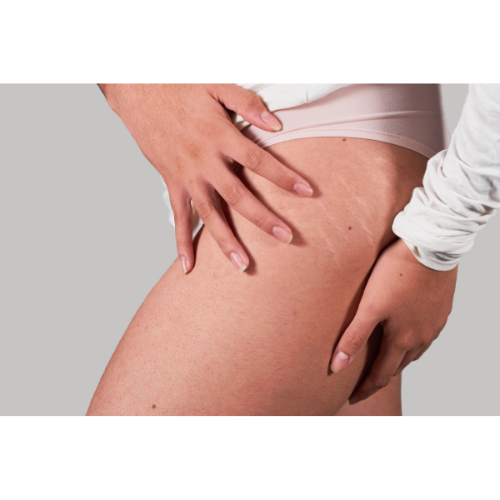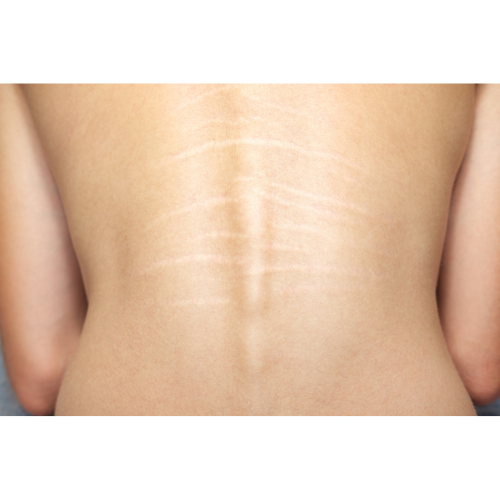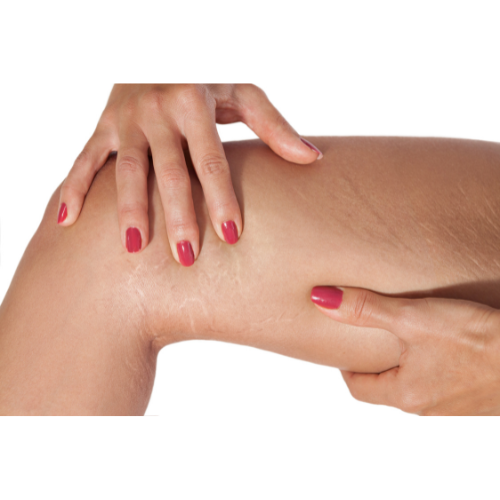CO2 Laser Skin Resurfacing: Breakthrough Approach for Stretchmarks Treatment

Stretch marks, often perceived as a bothersome beauty concern, have met a formidable adversary: CO2 Laser Skin Resurfacing. This revolutionary treatment promises to restore the unsullied allure of your skin. With its sophisticated application of CO2 laser's intricate energy, it's redefining the landscape of aesthetic skin solutions. Integration of this high-tech advancement plays a pivotal role in modern dermatology, offering new horizons and hope for those combating stubborn skin imperfections. This article will unearth the dynamics of CO2 laser skin resurfacing in the fight against stretch marks, unraveling its processes, efficacy, and prospective breakthroughs. Hold your breath as we delve into the intriguing realm of laser science, shedding light on the wonders this powerful tool holds for stretchmark treatment.
Understanding CO2 Laser Skin Resurfacing
Mechanism of CO2 Laser Treatment
How CO2 Lasers Work
CO2 lasers represent a type of gas laser that functions using a carbon dioxide mixture that's stimulated electrically. Their mechanism is focused on producing light at a wavelength of around 10,600 nanometers. This particular wavelength falls within the infrared section of the light spectrum; hence, it's invisible to the naked eye.
However, it's what makes CO2 lasers the superstars they are today in the skincare world. They can adequately penetrate the skin, breaking down old tissue and stimulating the formation of new skin layers rich in collagen and elastin - two proteins responsible for providing the skin with its flexibility and firmness respectively.

Types of CO2 Lasers
CO2 lasers used in skin resurfacing can be broadly categorized into two types: continuous-wave (CW) lasers and pulsed CO2 lasers. The primary difference between these two lies in the way they emit light.
Continuous-wave lasers give out a constant, unbroken beam of light, which results in continuous skin exposure as long as the laser is active. Conversely, pulsed CO2 lasers emit light in very short, concentrated bursts or pulses. This minimizes heat transfer to adjacent tissues, reducing skin damage and aiding quicker recovery.
Benefits of CO2 Laser Resurfacing
Advantages over Other Treatments
Among multiple methods to resurface the skin and enhance its appearance, CO2 laser skin resurfacing stands out due to several reasons.
Firstly, CO2 lasers can deliver high-precision, localized treatment devoid of any effect on the surrounding tissues. This is especially crucial when treating sensitive areas, like near the eyes or the lips.
Secondly, the thermal effect of CO2 lasers, thanks to their infrared wavelength, triggers a boost in collagen production. This facilitates more natural-looking and long-lasting results than what can be achieved with fillers or botox, for example.
Long-term Skin Improvement
CO2 laser skin resurfacing treatments promote the production of collagen and elastin in the deeper layers of the skin. As a result, improvements continue even after the recovery phase has passed, with patients often reporting ongoing positive changes up to a year after treatment.
Besides smoothing out wrinkles and erasing sunspots, CO2 lasers also lead to an overall rejuvenation of the skin, improving the tone, texture, and maintaining the skin's elasticity. Therefore, the impact of these treatments can be seen as a long-term investment in your skin health and beauty.

CO2 Laser Treatment for Stretch Marks
Stretch marks can be a source of discomfort for many, impacting their self-esteem and general satisfaction with their bodies. Come in, CO2 Laser Treatment for stretch marks, an advanced solution that offers hope for substantial stretch mark reduction.
Effectiveness on Stretch Marks
Stretch Marks Reduction
CO2 Lasers work by gently removing thin layers of skin, promoting the body's own healing process, which, in turn, encourages new, healthy skin growth. 🌱 If you were to Google "CO2 Laser for stretch marks before and after," you would find impressive transformations showcasing significant stretch mark reduction.
Comparison with Other Stretch Mark Treatments
When compared with other stretch mark treatments such as creams, micro-needling, or microdermabrasion, CO2 Laser skin resurfacing often stands out in terms of effectiveness. This cutting-edge technology offers a more aggressive approach, penetrating deeper layers of the skin and promoting advanced skin rejuvenation. Moreover, unlike other treatments, CO2 Lasers offer some degree of skin tightening, which can be beneficial for stretch mark improvement. 🎯
Suitable Candidates for CO2 Laser Treatment
Who Should Consider This Treatment?
If you're looking for a non-surgical, significantly effective method to reduce the appearance of unwanted stretch marks, CO2 Laser treatment may be just the solution for you. These treatments are ideal for individuals with generally good health, a fair skin tone (as darker skin types might risk hypo or hyperpigmentation), and realistic expectations.
Contraindications and Precautions
However, there are contraindications to keep in mind. CO2 laser resurfacing may not be suitable for individuals with darker skin tones, active skin infections, autoimmune disorders, or a history of abnormal wound healing. 💊 Also, make sure to disclose your history of cold sores or herpes virus to your practitioner, as they need to be pre-treated to avoid a flare-up following the procedure.
In the hands of an experienced professional, CO2 Laser skin resurfacing can be an effective solution for stretch marks. Consult with a qualified practitioner to discuss the treatment plan and personalized advice.👩⚕️

Procedure and Recovery
In CO2 Laser skin resurfacing as a treatment for stretch marks, knowing what to expect before, during, and after treatment is key. Here, we delve into the procedure and recovery process.
Pre-Treatment Preparations
Initial Consultation
The journey to CO2 Laser skin resurfacing typically starts with an initial consultation. During this meeting, the patient will discuss their concerns, expectations, and desired outcomes with the dermatologist. The dermatologist will then assess the patient's skin and stretch mark conditions, providing insight into the most effective and suitable treatment options.
Secondly, the patient's medical history is evaluated to rule out any circumstances that might potentially complicate the procedure. Conditions that might require consideration are diabetes, uncontrolled hypertension, or a history of keloid scars.
Skin Care Precautions
Prior to the CO2 Laser skin resurfacing, you must maintain good skin health. This involves adequately hydrating the skin, protecting against the sun, and abstaining from products that may irritate the skin leading up to treatment. Avoid any invasive skin procedures and products with harsh chemicals or exfoliating properties, as they can leave the skin excessively sensitive.
What to Expect During the Treatment
Step-by-Step Procedure
The CO2 Laser skin resurfacing treatment for stretch marks usually lasts about 30 to 60 minutes, depending on the extent of the area being treated.
- The procedure will begin with a thorough cleansing of the area to be treated.
- Anesthetic cream is applied to minimize discomfort.
- The CO2 Laser device is then guided over the skin while it emits precise beams of laser energy.
The laser encourages rejuvenation and stimulates collagen and elastin fibers within the skin, thus reducing the appearance of stretch marks.
Pain Management and Anesthesia Options
While some discomfort is expected during the CO2 Laser skin resurfacing treatment for stretch marks, various techniques are available to manage pain. The application of a topical anesthetic cream before the procedure is common, but oral or intravenous sedation may be considered for sensitive patients or large treatment areas.
Post-Treatment Care and Recovery
Immediate Aftercare
Post-procedure, patients may feel a slight burning sensation, similar to sunburn, for about an hour following treatment. Cooling gel packs or non-prescription pain relievers can be used to alleviate this discomfort.
Avoiding sun exposure and applying an ample amount of broad-spectrum sunscreen is critical for the first few days post-treatment. Keeping the skin well-moisturized with a non-irritating cream is also recommended.
Healing Timeline and Expectations
The healing process following CO2 laser treatment varies among individuals, though one can generally expect a 7 to 14 day recovery period. The treated skin may initially have a pink tone, which gradually lightens over weeks to months.
At regular intervals, patients will return to the clinic for assessments, where the dermatologist tracks the progress and gives further post-care guidance if necessary.
Successful CO2 Laser skin resurfacing for stretchmarks greatly depends on proper preparation, understanding the procedure, and diligent aftercare. By following these guidelines, you increase the chance of a smooth procedure and optimal results.
Potential Risks and Side Effects
Embarking on the journey to improve your skin's appearance using CO2 laser skin resurfacing is quite exciting. However, like every medical procedure, there are certain risks and potential side effects that you should be aware of. Remember, knowledge is power, and understanding these risks will help you prepare appropriately for the procedure.
Common Side Effects
No procedure comes without some attendant side effects. CO2 laser skin resurfacing isn't an exception. Naturally, your skin may respond to this extrinsic influence which may result in common side effects.
Temporary Redness and Swelling
A typical mild reaction to CO2 laser treatment for stretch marks includes temporary redness and swelling. Not to worry, these are expected reactions as the skin undergoes restructuring and results generally subside after a short period. 😌
Skin Sensitivity and Itching
Another side effect to note is skin sensitivity and itching. As your skin recovers from the laser influence, you may feel a tingling sensation or some level of discomfort. It is essential to refrain from scratching the area to avoid affecting the healing process or causing unnecessary damage.
Serious Complications
Although CO2 laser skin resurfacing is generally safe, there are still some chances of encountering serious complications, especially if the procedure is not carried out under the right conditions or by an unqualified individual.
Infection Risks
The risk of infection exists with any invasive procedure, including CO2 laser skin resurfacing. A good standard of hygiene in the treatment area is therefore important before, during and after the procedure.
Scarring and Pigmentation Changes
In rare cases, individuals may experience changes in skin pigmentation or unsightly scarring. Often, this is more prevalent among individuals who have a pre-existing condition which makes them more susceptible to such complication.
Minimizing Risks
While it is important to know the possible risks of CO2 laser skin resurfacing, it is equally essential to know how to minimize them. Here are some ways to reduce these risks.
Choosing a Qualified Practitioner
One of the surest ways to reduce risks associated with CO2 laser treatment for stretch marks is to use a qualified practitioner's services. Always verify the credentials, experience, and reputation of the physician before deciding to engage their services. A competent practitioner will be able to adeptly minimize any risks associated with the procedure.
Following Post-Treatment Instructions
Heed to post-treatment instructions and aftercare regime designed by your dermatologist or skincare specialist. These instructions, from wound care to sun exposure warnings, are meant to expedite recovery and minimize complications. In essence, being compliant with these instructions means accelerating your journey to glowing, stretch-mark-free skin with little or no setbacks. 🔆
While CO2 laser skin resurfacing as a treatment for stretch marks has immense benefits, it's important to understand the possible side effects and risks. Knowing what to expect allows us to make informed decisions about our health and beauty.